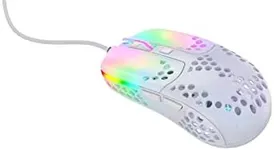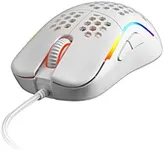Buying Guide for the Best Budget Projectors
Choosing the best budget projector can make a huge difference in your home entertainment or work experience without breaking the bank. The key is to match a projector’s features to your intended use. Are you planning to watch movies, play games, present slides in a small room, or take it on the go? Understanding your main uses will help you decide which features truly matter, ensuring you get the most value and the right level of performance for your needs.Brightness (Lumens)Brightness, measured in lumens, tells you how much light the projector can produce. This is important because a brighter projector will display clearer and more visible images in rooms that aren't completely dark. Lower brightness, around 1000-1500 lumens, is suitable for dark rooms with controlled lighting—great for movie nights in a home theater. Medium brightness, about 2000-3000 lumens, is better for spaces with some ambient light, like living rooms with shaded windows. High brightness, over 3000 lumens, is best for daylight viewing or larger rooms. To decide what’s right for you, consider the lighting in your typical viewing area; if you can darken your space, lower lumens are fine, but for flexible and daytime use, aim higher.
ResolutionResolution refers to how many pixels your projector displays, which affects image clarity and sharpness. This is important because higher resolution means more detailed pictures, making it ideal for videos, presentations with small text, or gaming. Common options are SVGA (800x600), XGA (1024x768), and HD (1280x720 or 1920x1080). Lower resolutions are cheaper and can work for basic presentations or casual viewing, but might look blurry for movies or detailed visuals. If you care about watching films or seeing fine details, try to choose a projector with at least HD resolution.
Throw DistanceThrow distance is how far the projector needs to be from the screen to create an image of a certain size. This matters a lot depending on your room layout. Short throw projectors can be placed close to the screen (about 3-6 feet) and are ideal for small rooms or limited space. Standard throw projectors need to be several feet back (8 feet or more) and work well if you have a larger room. To pick the right one, measure your space and check if the projector’s throw distance fits your setup. If you’re not sure where you’ll use it, a more flexible throw distance might be best.
ConnectivityConnectivity describes what types of devices you can plug into your projector, such as HDMI, USB, VGA, or wireless options. This is important because it affects how easily you can connect your laptop, game console, speaker, or streaming device. Some basic projectors have only simple inputs like VGA or USB, suitable for older laptops or basic media. More versatile models support HDMI or Wi-Fi, making them more compatible with recent electronics. Think about what devices you plan to use most with your projector, and make sure it has the right ports for those without needing extra adapters.
Lamp LifeLamp life is how long the projector’s light source will last before needing replacement. This matters for cost and convenience, as longer lamp life means fewer bulb changes and less maintenance. Shorter lamp life (under 5,000 hours) works if you’ll use the projector only occasionally, like movie nights or special events. Longer lamp life (over 10,000 hours) is better for frequent use or if you want to avoid the hassle of replacements. Estimate how many hours per week you’ll use the projector to help decide how important this is for you.
Built-in SpeakersMany budget projectors include built-in speakers for convenience, but their sound quality can vary and often doesn’t match external speakers. This feature is important if you want a quick, all-in-one setup or need portability, like for outdoor movie nights or classrooms. If you’re an audiophile or plan to use the projector for movie marathons, you might prefer a projector that allows you to connect to better external speakers. Consider how you’ll use the projector and what sound quality you expect when weighing this feature.
Portability and SizePortability is about how easy it is to move and set up the projector. Smaller and lighter models are easier to carry to different rooms or even outside, making them good for travel or multi-purpose use. Bulkier projectors might offer more features but are better suited to a permanent setup. If you want flexibility or plan to use the projector in different places, choose a compact, lightweight option. If it will stay in one spot, portability matters less.
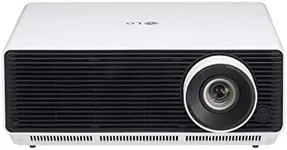
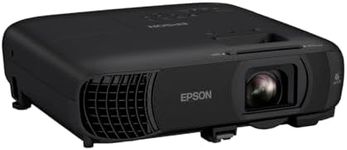
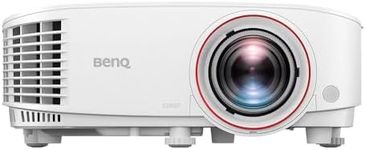
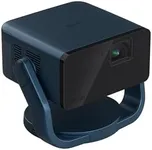
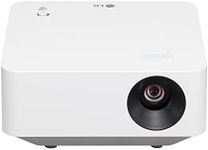

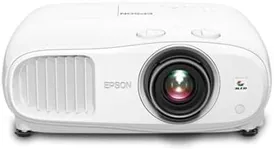
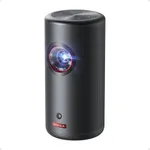
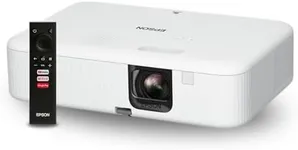

![[Electric Focus/Auto Keystone] Proj](https://images-proxy.bestreviews.guide/B3215gMtH5kHOUFDJ8mxX67AwPU=/0x150/https://m.media-amazon.com/images/I/31z62Q6CKeL._AC_CX679_.jpg)




